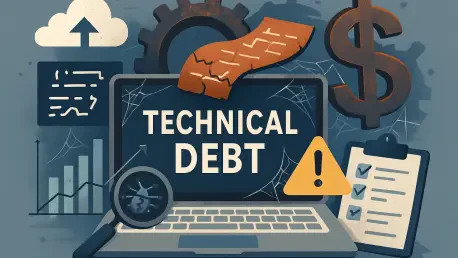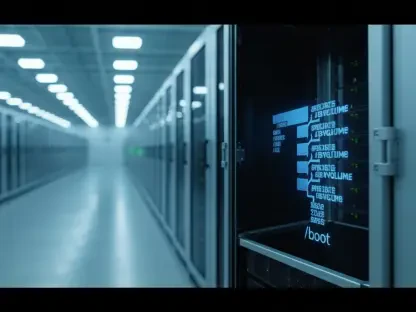Welcome to an insightful conversation on software development and managing technical debt with our esteemed SaaS and software expert, Vijay Raina. With a deep background in enterprise SaaS technology and a passion for software design and architecture, Vijay has guided numerous teams through the complexities of maintaining high-quality code while navigating the inevitable challenges of technical debt. In this interview, we dive into the essence of technical debt, explore the risks and rewards of software improvements, and unpack various strategies for addressing legacy systems—whether through minimal intervention, continuous refactoring, or bold architectural overhauls. Join us as Vijay shares his seasoned perspective on making informed decisions in the ever-evolving world of software development.
How would you define technical debt in the context of software development, and why does it matter so much?
Technical debt, to me, is the accumulation of shortcuts, outdated practices, or suboptimal code that you take on during development, often to meet deadlines or immediate needs. It’s like borrowing time or resources—you’ll have to pay it back later with interest in the form of slower delivery, bugs, or rework. It matters because it directly impacts the maintainability and scalability of a system. If ignored, it can frustrate teams and erode customer trust through poor performance or unreliable features. Early in my career, I saw how neglecting code quality led to cascading issues, and it taught me that addressing technical debt isn’t just a technical necessity; it’s a business imperative for long-term success.
Can you share a memorable experience where you tackled a project burdened with significant technical debt, and how you approached it?
Absolutely. A few years back, I worked on a legacy system that had been patched together over a decade. The codebase was a maze—undocumented, inconsistent, and fragile. Every change risked breaking something critical. My approach was to first understand the business context: what parts of the system were still vital to users? From there, we prioritized small, incremental refactoring over a complete rewrite, focusing on high-impact areas. We introduced automated tests to build confidence in changes and worked closely with stakeholders to manage expectations about pace versus risk. It wasn’t glamorous, but over several months, we reduced critical bugs by nearly 40%. That taught me the value of patience and strategic focus when dealing with technical debt.
When it comes to making changes like refactoring or redesigning software, what risks do you see as most significant?
The biggest risk is breaking something that already works. Even with the best intentions, refactoring or redesigning can introduce subtle bugs or disrupt functionality, especially in complex systems where dependencies aren’t fully understood. The risk level often depends on the maturity of the application and the team’s development practices—like whether there’s robust testing in place. I’ve seen cases where a seemingly minor change caused downtime because it wasn’t thoroughly vetted across environments. Another risk is scope creep; what starts as a small refactor can balloon into a massive overhaul if not tightly managed, draining resources and frustrating teams.
How do you ensure transparency with your team and stakeholders when communicating these risks?
Transparency is all about setting realistic expectations and fostering trust. I start by explaining the ‘why’ behind the change—what technical debt we’re addressing and the potential benefits. Then, I lay out the risks plainly: what could go wrong, the likelihood, and the impact. I use data wherever possible, like metrics on past incidents or system performance, to ground the conversation. I also make sure to outline mitigation plans, such as phased rollouts or fallback options, so everyone knows we’re prepared. Most importantly, I keep communication ongoing—regular updates during the process help prevent surprises and build confidence, even if something does go awry.
Under what circumstances do you believe it’s wisest to leave a legacy system untouched, and how do you make that call?
Leaving a legacy system as-is often makes sense when it’s stable, meets current needs, and isn’t a priority for active development. If the system is running smoothly and the business isn’t planning to scale or enhance it, pouring resources into refactoring can be a waste. I make that call by assessing a few key factors: the system’s alignment with company goals, the cost of maintenance versus improvement, and the risk of future upgrades if left untouched. For instance, if a system is slated for decommissioning in a year, I’d likely advocate for minimal maintenance unless there’s a clear need—like data migration—that justifies some targeted improvements.
What are the key advantages of continuous refactoring, and when do you find it most effective?
Continuous refactoring is powerful because it prevents technical debt from piling up in the first place. It keeps the codebase clean, adaptable, and easier to work with, which speeds up delivery and reduces bugs over time. I find it most effective for newer applications—say, less than a year old—where the code is still manageable, and teams can embed good habits early. Even for slightly older systems, it works well if a single team owns the codebase and can maintain a steady pace. The advantage is in the compounding effect; small, consistent improvements build a foundation that makes future changes less risky and more efficient.
When does introducing a new code architecture become necessary, and how do you get team buy-in for such a shift?
A new architecture is necessary when the current structure fundamentally hinders progress—think scalability issues, frequent bottlenecks, or a codebase that confuses everyone working on it. This often comes up with applications over a year old where technical debt has started to stifle innovation. To get team buy-in, I focus on clarity and collaboration. I start by presenting the problem with concrete examples, like metrics showing slowdowns or error rates. Then, I outline the proposed architecture and how it addresses those pain points. Workshops or brainstorming sessions help ensure everyone understands the vision and feels heard. When the team sees how the change benefits their day-to-day work, resistance usually fades.
For complex systems with multiple teams, how do clear boundaries and a divide-and-conquer approach improve outcomes?
In large systems, clear boundaries—whether architectural or infrastructural—are a game-changer. They reduce cognitive load by letting teams focus on their specific subdomain without worrying about the entire platform. This approach also minimizes dependencies, which speeds up delivery since teams aren’t constantly waiting on each other. I’ve seen it foster autonomy; teams take ownership of their code, make decisions confidently, and drive improvements without fear of conflicts. For example, defining ownership of specific modules or services ensures accountability and cuts down on the chaos of shared code. Ultimately, it creates a structure where collaboration happens by design, not by necessity.
Looking ahead, what is your forecast for the evolution of technical debt management in software development?
I think we’re heading toward a more proactive and automated era of technical debt management. With the rise of AI-driven tools and advanced analytics, teams will have better visibility into debt hotspots before they become crises—think real-time code quality metrics or predictive models for maintenance needs. I also foresee a cultural shift where addressing technical debt becomes a core part of development cycles, not an afterthought, especially as businesses recognize its impact on customer experience and innovation. We’ll likely see more frameworks and best practices emerge for balancing short-term delivery with long-term health, making it easier for teams of all sizes to stay ahead of the curve.









